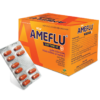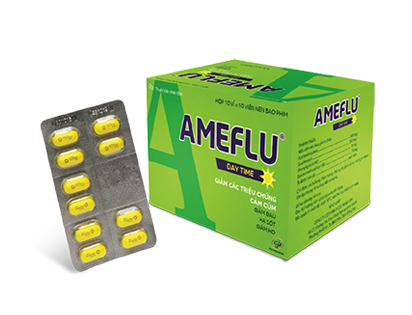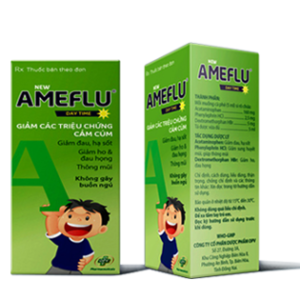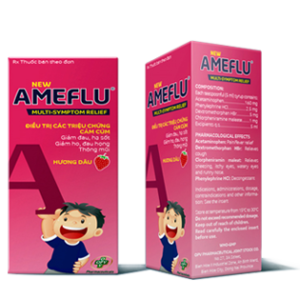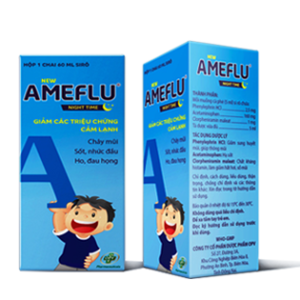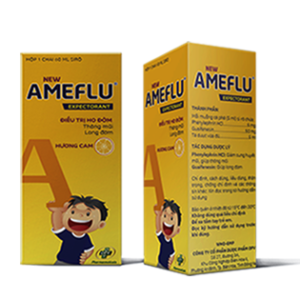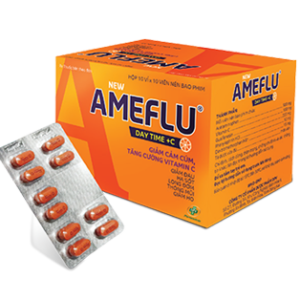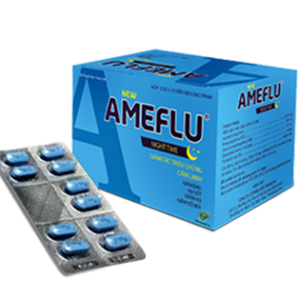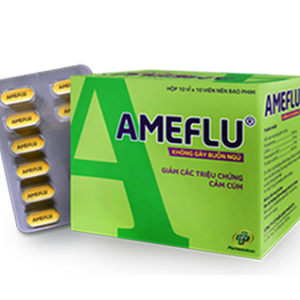COMPOSITION:
Each film coated caplet contains:
Active ingredients:
Acetaminophen….………….500 mg
Guaifenesin……………………200 mg
Phenylephrine HCl………….10 mg
Dextromethorphan HBr…. 15mg
Excipients: Maize starch, pregelatinized starch, povidone K30, sodium starch glycolate, colloidal silicon dioxide, magnesium stearate, talc, citric acid anhydrous, dicalcium phosphate anhydrous, opadry yellow AMB.
PHARMACODYNAMICS:
Acetaminophen is the active metabolite of phenacetin, exhibits analgesic action by peripheral blockage of pain impulse generation. It produces antipyresis by inhibiting the hypothalamic heat-regulating centre.
Guaifenesin is an expectorant, the action of which promotes or facilitates the removal of secretions from the respiratory tract.
Phenylephrine hydrochloride is a sympathomimetic with mainly direct effects on alpha1 adrenergic receptors, causes vasoconstriction, reduces nasal congestion and sinusitis.
Dextromethorphan hydrobromide is a cough suppressant, which has a central action on the cough centre in the medulla. It has no analgesic properties and little sedative activity.
PHARMACOKINETICS:
Acetaminophen is readily absorbed from the gastrointestinal tract with peak plasma concentrations occurring about 30 to 60 minutes after oral dose. Acetaminophen is distributed into most body tissues. It crosses placenta and is present in breast milk. Plasma protein binding is negligible at usual therapeutic concentration but increases with increasing concentrations. The elimination half-time varies from about 1 to 3 hours. Acetaminophen is metabolised predominantly in the liver and excreted in the urine mainly as the glucuronide (about 60-80%) and sulfate (about 20-30%) conjugates. Less than 5% is excreted as unchanged Acetaminophen. A minor (below 4%) metabolite is usually produced in very small amounts by cytochrom P450.
Guaifenesin is well absorbed from the gastrointestinal tract. It is metabolised and then excreted in the urine.
Phenylephrine hydrochloride is irregularly absorbed from the gastrointestinal tract and undergoes first-pass metabolism by monoamine oxidase in the gut and liver. It is almost entirely excreted in the urine.
Dextromethorphan hydrobromide is rapidly absorbed from the gastrointestinal tract and has effect in 15 – 30 minutes after oral doses, duration is about 6-8 hours. It is metabolised in the liver and excreted in the urine as unchanged dextromethorphan and demethylated metabolites including dextrorphan, which has some cough suppressant activity.
INDICATIONS:
It is indicated to relieve the symptoms of flu and common cold:
- Fever
- Minor aches and pains
- Headache
- Cough
- Sore throat
- Nasal congestion
- Helps loosen phlegm (mucus) and thin bronchial secretions to make coughs more productive.
DOSAGES AND ADMINISTRATIONS:
Adults and children from 12 years and older: Take 1 caplet every 6 hours. Do not take more than 6 caplets in 24 hours.
Children (6-11 years): Take 1/2 caplet every 6 hours, not to exceed 3 caplets in 24 hours.
CONTRAINDICATIONS:
- Patients with known hypersensitivity to any ingredients of this product.
- Patients who are receiving MAOIs (see Drug interaction section).
- Patients with coronary disease and severe hypertension.
- G6DP insufficiency.
- Patients with severe hepatic failure.
- Children under 6 years.
WARNINGS & PRECAUTIONS:
Do not use with any other product containing Acetaminophen.
Ask a doctor before use if you have:
Heart disease, liver disease, diabetes, hyperthyroidism. Cough that occurs with too much phlegm (mucus), high blood pressure, renal failure, glaucoma, trouble urinating due to enlarged prostate gland. Chronic cough that lasts as occurs with smoking, asthma, chronic bronchitis or emphysema.
Stop use and ask a doctor if:
- New symptoms occur.
- Redness or swelling is present.
- Pain, nasal congestion, or cough gets worse or lasts more than 7 days.
- Fever gets worse or lasts for more than 3 days.
- You get nervous, dizzy or sleepless.
- Cough comes back or occurs with fever, rash or headache that lasts.
- These could be signs of a serious condition.
Use in pregnancy and breast-feeding: Ask a doctor before use
Effects on ability to drive and operate machine: Cautiously use when driving vehicle or operating machinery.
SIDE EFFECTS:
There are rare cases of allergy such as: Skin rash, erythema, urticaria, thrombocytopenia, hepatic failure. Other side effects are restlessness, insomnia, hypertension, arrhythmia, dizziness, nausea, vomiting, gastric irritation, tremor, weakness, hallucinations and difficulty breathing.
In case of an unexpected reaction, consult your physician.
INTERACTIONs:
- Do not take this product if you are now taking a prescription of monoamine oxidase inhibitor (MAOI) (certain drugs for depression, psychiatric or emotional conditions, or parkinson’s disease), or for 2 weeks after stopping the MAOI drug. If you do not know if your prescription drug contains an MAOI, ask a doctor or pharmacist before taking this product.
- Phenytoin, barbiturate, carbamazepin, isoniazid may increase the hepatotoxicity of Acetaminophen.
- Concomitant use of phenylephrine with other sympathomimetic amines can increase the risk of cardiovascular side effects.
- Phenylephrine may reduce the efficacy of beta-blocking drugs and antihypertensive drugs (including debrisoquine, guanethidine, reserpine, methyldopa). The risk of hypertension and other cardiovascular side effects may be increased.
- Tricyclic antidepressants (e.g. amitriptyline, imipramine): May increase the risk of cardiovascular side effects with phenylephrine.
- Concomitant use of phenylephrine with ergot alkaloids (ergotamine and methylsergide): Increase the risk of ergotism.
- Concomitant use of phenylephrine with digoxin: Increase the risk of irregular heartbeat or heart attack.
- Concomitant use of phenylephrine with atropine will block the reflex bradycardia that phenylephrine causes.
OVERDOSAGE AND TREATMENT:
Acetaminophen:
Symptoms: Nausea, vomiting and abdominal pain (normally settle within 24 hours of ingestion). After 24 hours symptoms may include right subcostal pain and tenderness, usually indicates development of hepatic necrosis. Liver damage is greatest 3-4 days after ingestion and may lead to encephalopathy, haemorrhage, hypoglycaemia, cerebral oedema and death.
Treatment: Treatment is based on plasma concentration. Acetylcysteine protects the liver if administered within 24 hr after ingestion (most effective if given within 8 hours). Dose: 140 mg/kg orally (loading) followed by 70 mg/kg every 4 hours for 17 doses. Activated charcoal or gastric lavage may be treated to decrease absorption of Acetaminophen.
Phenylephrine hydrochloride:
Symptoms: Hypertension, headache, convulsions, cerebral haemorrhage, palpitation, slow heart rate.
Treatment: Should provide symptomatic and supportive care.
Dextromethorphan:
Symptoms: Nausea, vomiting, somnolence, blurred vision, nystagmus, urinary retention, euphoria, hallucination, ataxia, respiratory failure and convulsion.
Treatment: Symptomatic and supportive treatment, can administer intravenous injection of naloxon 2 mg, to be repeat if necessary.
An overdose of Guaifenesin is not likely to cause life-threatening symptoms.
In case of accidental overdose, contact a doctor or come to the nearest hospital immediately.
PRESENTATION:
10 caplets packed in blister.
Box of 1 blister, 10 blisters or 20 blisters.
STORAGE: Store at temperature from 150C to 300C, in a dry place, protect from light.
SHELF-LIFE: 36 months from manufacturing date. Do not use after expiry date.



